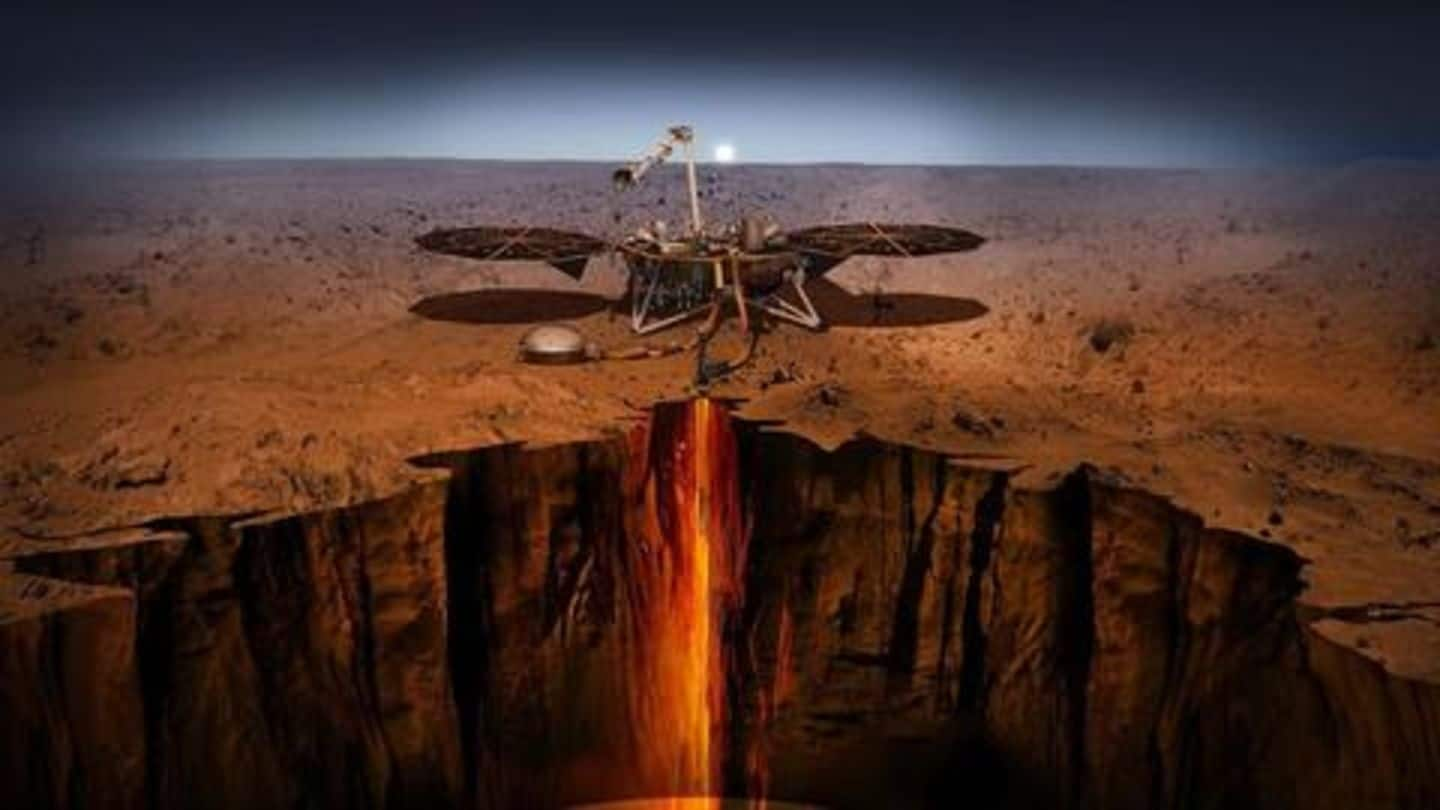
Touchdown! NASA's InSight robot sets foot on Mars: Details here
What's the story
After traveling through deep space for over six months, NASA's InSight lander has finally reached its destination - Mars. The robotic probe made an atmospheric entry into the Red Planet and landed safely on the western side of a flat, smooth expanse of lava, called Elysium Planitia, near its equator. It will now study the depths of Mars to uncover its evolution. Here's more.
Quote
InSight plunged at very high speeds
"We hit the Martian atmosphere at 19,800 kilometers per hour, and the whole sequence to touching down on the surface took only six-and-a-half minutes," says NASA project manager Tom Hoffman. During entry, InSight performed multiple operations to bear the heat and aerodynamic forces in action.
Mission
But, what will this lander do?
The robotic probe will drill into the interior of Mars and use a range of instruments to determine how the planet formed in the first place and evolved into what it is today. To understand Martian construction from its core to the crust, the lander will study 'Marsquakes'. It will also use experiments to understand the interior temperature and axial tilt of the planet.
Information
Touchdown to follow up with setup
Soon after landing on the surface of Mars, InSight began surface operation, which includes deployment of its solar arrays for providing power. Its investigations will begin within a week from landing, but the deployment of the main instruments will start within a month or two.
Importance
Why understanding Martian interior is important?
Earth and all other planets in our Solar System came to be some 4.5 billion years ago. Scientists have got detailed models to describe each of these worlds, but practically only Earth composition has been studied. With InSight, they have a chance to understand how the rocky world formed but turned out so different from Earth as it evolved with time.
Quote
Basically, this could help us determine the differences
"Earth and Mars were molded out of very similar stuff," said InSight's principal investigator Bruce Banerdt. "Why did the finished planets turn out so differently? Our measurements will help us turn back the clock and understand what produced a verdant Earth but a desolate Mars."